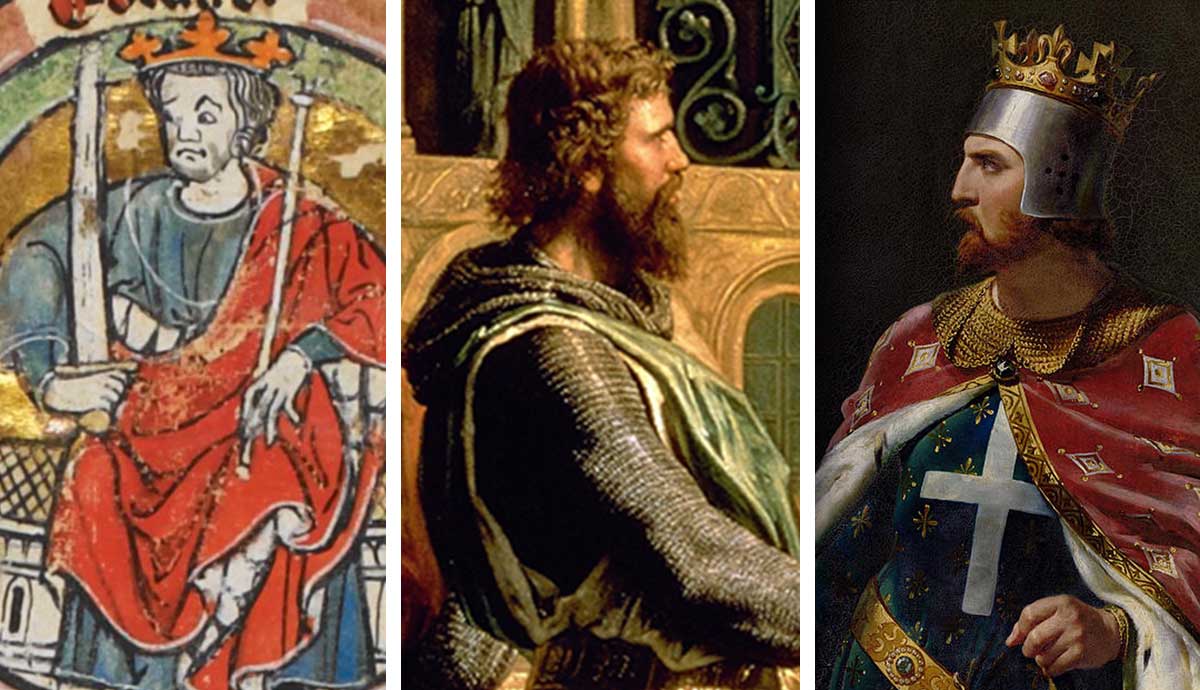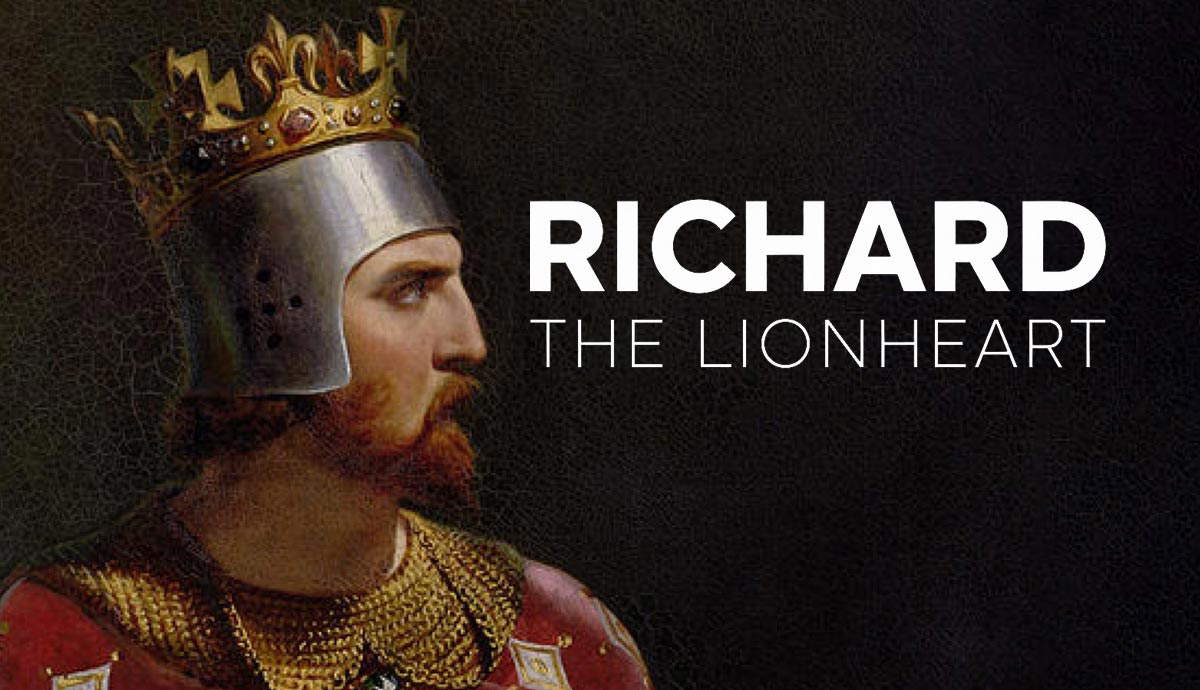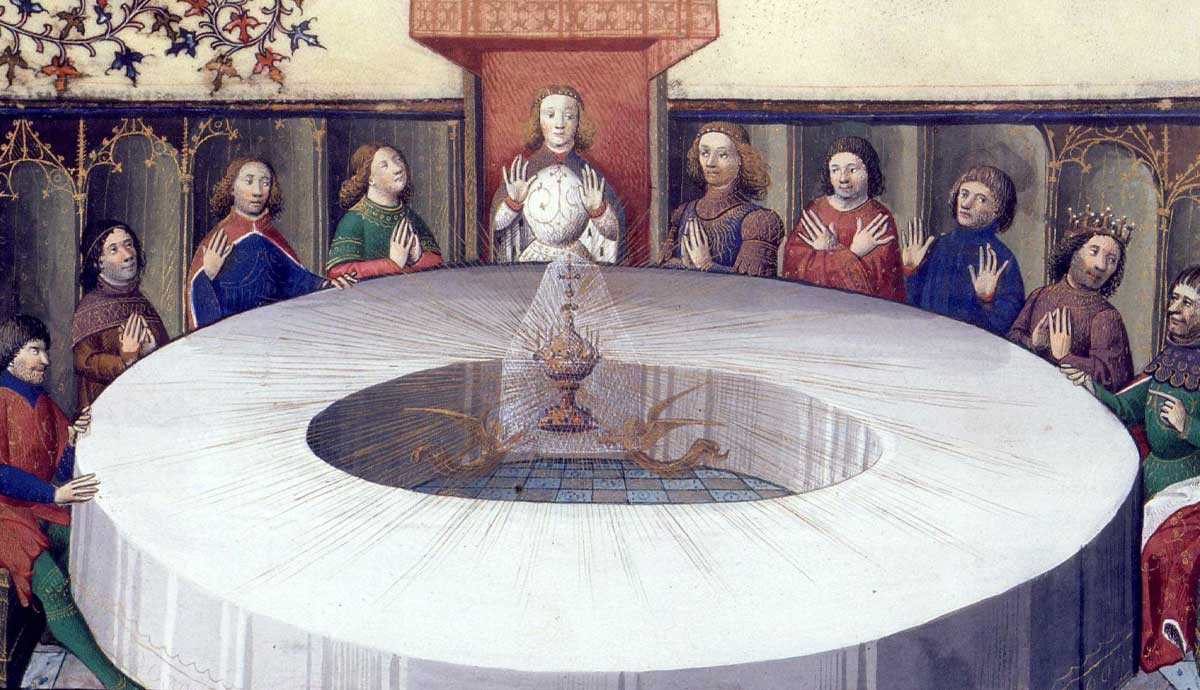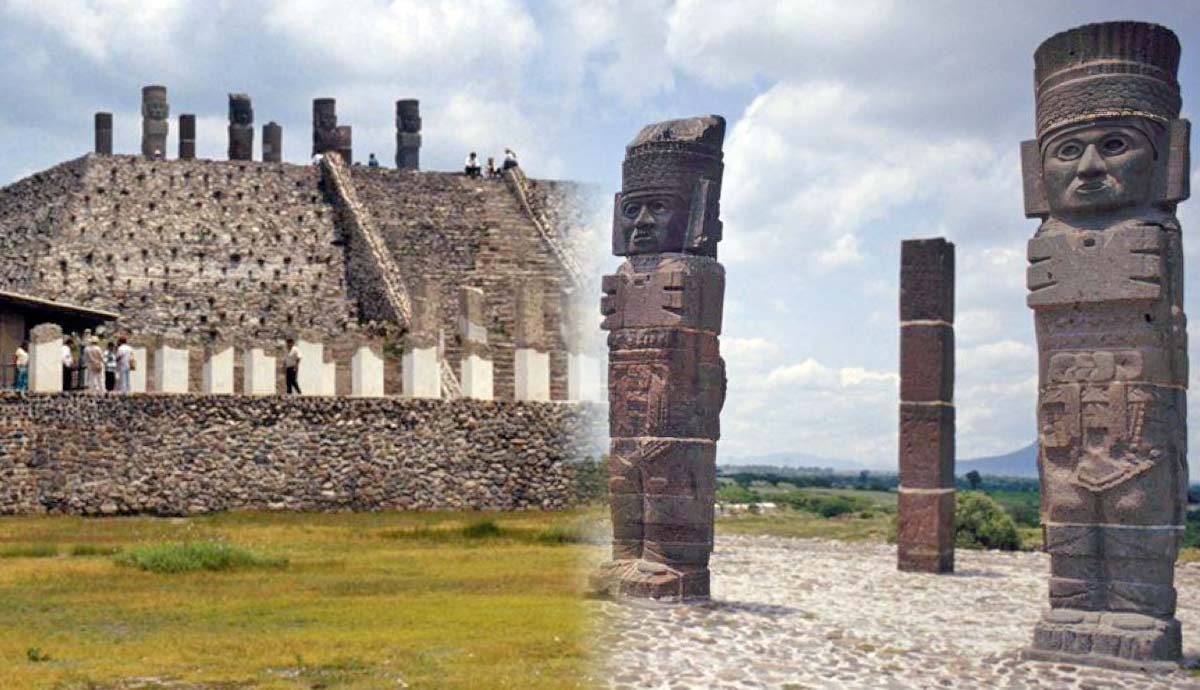
While the High Medieval Period is famous for its warrior and martial cultures, there are some military leaders who really stand out above the rest. These are the men known not merely as great fighters, but as generals whose successes are studied even to this day. The ten figures on this list are those known for their unique and noteworthy military abilities during roughly the period of 1000-1300 CE.
1. Saladin, 1137-1193

In a fascinating coincidence, two of the period’s foremost military leaders battled against one another in the Third Crusade. Richard the Lionheart of England and Saladin were remarkable adversaries and had unique strengths and weaknesses that mirrored those of the other.
To begin, Saladin, born to a military official in Iraq, gained experience serving the Zengid Dynasty defending Syria from the Crusader States, and helping to conquer Egypt. Eventually, however, Saladin turned on his former masters and made himself the independent Sultan of Egypt and Syria. Then he turned his attention to the Crusader state of Jerusalem. In a series of brilliant campaigns, Saladin weakened the Crusader’s control of the Holy Land and then baited the Crusaders into a decisive defeat at Hattin in 1187. Shortly thereafter, he captured Jerusalem and left the Crusaders clinging onto the city of Tyre as their only power base in the region.
Saladin’s brilliance was in his grand strategy and choice of engagements. He knew the Crusaders were well-defended behind city walls and their knights were more than a match for his men in open combat. So, he used his army to bait them from behind their walls and then pulled back, harassing the heavy Crusader knights with his lighter-mounted archers. He led the Crusaders to Hattin, where he was able to surround them and cut them off from their supply of water, letting thirst and attrition destroy his enemy. After this success, however, the Third Crusade was called and Richard I, King of England entered the fray.
2. Richard the Lionheart, 1157-1199

Richard I of England earned his epithet “the Lionheart” for his legendary bravery, but he was also a brilliant battlefield tactician and military commander. He first took command at just 16, spending several years alternating between rebelling against his father Henry II, and fighting for him against other rebels. He ascended to the throne after his father and older brother died but quickly set off on the Third Crusade. On the way he successfully captured Cyprus for the Crusaders, and then captured Acre, beginning the start of a counter-offensive against Saladin.
Richard was a strict disciplinarian and an innovator, utilizing a greater number of crossbows in his army to counter the horse archers of Saladin. He confounded Saladin by refusing to fall for the same tricks Saladin had used on previous Crusader armies, preventing his forces in the field from chasing and harassing units or falling for feigned retreats.
In the field, Richard was arguably the superior tactician, but Saladin seemingly had the edge in terms of grand strategy. Twice Richard defeated Saladin at Arsuf and Jaffa, and after both, he looked set to capture Jerusalem, but both times Saladin was able to retreat his forces, deny Richard supplies, and allow time and disunity among the other Crusader leaders to prevent Richard from taking the city. The Crusade ended in a truce with Jerusalem remaining in Muslim hands but with Christian pilgrims free to enter the city.

Richard the brilliant battlefield tactician and Saladin the masterful grand strategist serve as illuminating contrasts when looking at medieval warfare. There is plenty to speculate about as to how history could have changed had one gotten the better of the other, and if the two had joined forces such a military duo would have been hard to beat. That last suggestion appears fanciful on paper, but the two had seemingly great respect for each other, and at one point while negotiating the truce, it was suggested Saladin’s brother would marry Richard’s sister!
3. Rajendra Chola, 971-1044

The Chola Empire was a major power in Southern India during the Middle Ages. Arguably the greatest ruler of the dynasty was Rajendra Chola, who expanded the empire to yet greater heights. He began his military career under his father Rajaraja, taking part in both land and naval expeditions. Rajendra commanded with distinction during invasions of the Maldives and Sri Lanka as well as raids on neighboring kingdoms in the Indian subcontinent. In 1014, Rajendra ascended to the throne and soon made it his clear ambition to increase the prestige of his dynasty and the size of his dominions.
He first finalized the conquest of Sri Lanka and the Maldives, before turning his attention inland. In the early 1020s, he engaged and defeated several kingdoms in Southern India, often invading on multiple fronts. Soon he had expanded his empire west and northwards and was even able to capture territory along the sacred Ganges River, where he built a new capital. This was an astonishing achievement in and of itself, but Rajendra still had greater plans. In the late 1020s, he attacked the Srivijaya dynasty of Indonesia and in a series of brilliant naval expeditions, he plundered cities across the Malay peninsula and Sumatra, even going as far as Singapore!
It is unclear how often, as emperor, Rajendra commanded in the field, leaving that to his brother Araiyan Rajarajan, but Rajendra was no doubt a great tactician in his own right and a brilliant grand strategist. He often launched sudden and fast-moving campaigns against multiple enemies at once. He combined the two arms of his army well, using his navy to supply his army along the coast and even using it to sail along the Ganges to strike at the heart of enemy territory during his northern campaigns.
4. Baybars, 1223-1277

In the 1230s CE, a young Kipchak boy was captured and enslaved in what is now Ukraine following a Mongol raid. He was sold in Egypt and trained to become a Mamluk or elite slave soldier. In a twist of fate, the boy, Baybars, would become the nemesis of the Mongols in the Near East and one of the fiercest warriors of the age.
Baybars’s military aptitude was swiftly put to use by the ruling Ayyubid Dynasty of Egypt. In 1250 CE, he defeated part of the Seventh Crusade at the siege of Al Mansirah. His star continued to rise when the Mamluks seized power from the Ayyubids and Baybars became the right-hand man of the new Sultan, Qutuz.
Together they repelled an invasion by the Mongol Ilkhanate at Ain Jalut—personal vengeance for Baybars and an unprecedented victory against the Mongols. Baybars, however, had greater ambitions and assassinated Qutuz to become Sultan in his own right and carry out yet greater military accomplishments.
First, he attacked the Crusader States, seizing Antioch, Jaffa, and even the legendary Crusader castle of Krak Des Chevaliers. In a mirroring of Saladin and Richard, this led to the Ninth Crusade—led by another English king, Edward. However, the two never actually fought and the Crusade ended before the territory changed hands. Baybars then turned south and subjugated the Christian kingdom of Makuria, in modern-day Sudan, which had long been a thorn in the side of Islamic Egypt. His final campaign before his death saw him once again take victory over a Mongol invasion at Elbistan.

The Mongols Baybars faced may have been a more fractured force than the unrelenting horsemen that Genghis Khan had led across the globe 40 years previously, but Baybars’s repeated successes against them were still astonishing. Baybars used the backbone of his army, the Mamluk cavalry, to perfection. They were heavily armored horsemen, but used a bow to fight at range, allowing them to compete with both Christian knights and the Mongol horse archers.
Baybars turned his kingdom into a war machine to defeat his foes, building highly developed arsenals to equip his troops. He was also a ruthlessly cunning commander, often using deception and false reports to mislead his enemy about the army’s whereabouts. Indeed, at his first battle at Al Mansirah, he tricked the besieging Crusaders by opening the gates of the city and making it appear abandoned, before shutting the gates again when the Crusaders had entered and falling upon his now trapped enemy with his army that was hiding in the city center.
5. John Komnenos, 1087-1143

After the shock defeat at the Battle of Manzikert in 1070 against the Seljuk Turks, the Byzantine Empire seemed in very poor shape. However, in 1081, the new Emperor Alexios Komnenos, after a small setback at the Battle of Dyrrhachium, oversaw the empire’s remarkable revival by the beginning of the 12th century. Alexios reformed the Byzantine military and diplomatically stabilized the Empire, but it would be his son John who would reignite the empire’s military might. Ascending to the throne in 1118 CE, John added to the reforms of his father but went one step further by putting the empire fully back on the offensive.
After securing the Balkans by defeating Pecheneg and Hungarian incursions, John turned his attention to driving back the Seljuks in Anatolia. In a series of steady, methodical campaigns, John succeeded in recapturing almost all of the western coast of modern-day Turkey and much of the southern coast. He recaptured Cilicia and even advanced into northern Syria, campaigning alongside the Crusader States that had recently conquered much of the Levant and Syria upon invitation by Alexios.
John’s military strength lay in the patience of his strategy and his brilliance as a besieger. John focused on small but consistent advances against the Seljuks and securing these gains before ending his campaigns and returning the next year. This gave him time to return to Constantinople to reduce the threat of plots against his reign in his absence and also ensured his other frontiers were stable.
On campaign, John avoided risking his army and all his gains on pitched battles. Instead, he focused on capturing enemy strongholds to ensure progress and keep his gains secure after ending the campaign.
6. El Cid, 1043-1099

Rodrigo Diaz de Vivar is one of Spain’s most celebrated folk heroes. He was born in the mid-11th century, during the turbulent period when Spain was divided between several Christian kingdoms in the north, and the Islamic Taifas of Al-Andalus or Moorish Spain in the south. He first rose to prominence as a military leader in the service of King Sancho II of Castille, expanding his master’s territory against Christian and Moorish enemies alike. However, he was then exiled in 1079 by Sancho’s brother and heir Alfonso, whom he had previously defeated in battle.
Despite his exile, soldiers still flocked to his banner and soon Rodrigo found employment with the Taifa of Zaragoza, another former enemy. As loyal and capable a soldier under an Islamic liege as a Christian one, Rodrigo continued to win military glory, earning the title of “El Cid,” a Spanish translation of the Arabic “Al-Sayyid,” or “The Lord,” and “Campeador,” meaning “Champion” in Spanish.
In 1087, Alphonso recalled El Cid from exile to defend against an invasion by the Almoravids of Morocco. Once again, El Cid loyally supported his liege, but another dispute led to a second exile. This time, El Cid established himself as an independent ruler of the city of Valencia. He successfully defended his new fief from the Almoravids and all other comers until his death in 1099 CE.

What makes El Cid notable in the pantheon of medieval military leaders is the loyalty he earned from his soldiers and his ability to win against great odds. His personal bravery and readiness to lead from the front encouraged this loyalty in his men. However, part of his success came from an uncanny ability for tactical timing and his sense of when exactly to launch decisive maneuvers. At the battle of Golpejera in 1072, he advised King Sancho to counterattack after initially being forced to retreat. El Cid led a dawn charge, catching their enemy—who had spent the night celebrating their presumed victory—completely unaware.
7. Genghis Khan, 1162-1227

Few leaders in history enjoy a reputation as notorious as that of Genghis Khan. The personification of conquest and plunder, Genghis needs little introduction. Yet the man born Temujin Borjigin on the banks of the Onon River seemed unlikely to reach the heights that he did. As a child, his family was abandoned by the rest of his tribe when his father died. He survived, thanks to the determination of his mother who taught him the skills to survive on the steppe, but his early life was one of extreme hardship.
Through sheer determination, cunning, and superb military and political ability, Temujin rose to prominence as a soldier and leader. Gradually he gained power until he was able to unite all the clans of the steppe and obtained the title of supreme or great ruler: Genghis Khan. However, this was not the end of his ambition, and soon he and his men would create the largest land empire the world has ever seen.
It is difficult to adequately summarize just how stunning and dramatic Genghis’s rise to power and military success were. His lowly start made his future success even more incredible and enabled him to reform traditional Mongolian society into a formidable fighting force. Genghis promoted his generals based on ability, not aristocratic connections, giving him the best quality subordinates. Likewise, he remade the traditional clan system into a simple but effective organizational system. Each man belonged to a band of ten, ten of those bands formed a group of 100, and so on, until the highest division of 10,000 men — known as a Tumen.

The Tumens could operate semi-independently, giving Genghis and the Mongols greater strategic flexibility. He also ensured a portion of all plunder taken was put into a fund for the families of his dead and living soldiers, meaning forces could stay on campaign for longer while still supporting their families.
Aside from these reforms, Genghis was a brilliant field commander. There are many stories of his tactical brilliance but perhaps the most astonishing was his invasion of the Khwarazm Empire. In 1220, Genghis deceived the Shah of the Khwarazm Empire by besieging the border forts between their empires. Then he himself led his main force across the seemingly impassible Kyzyl Kum Desert using a carefully managed supply system to strike into the empire’s heart with no warning.
8. Edward I, 1239-1307

Edward I, also known as “Longshanks,” is perhaps best known as the villain of Mel Gibson’s Braveheart, but there is much more to this King of England than was depicted in the 1995 epic. Edward’s career as a commander began with the Battle of Evesham in 1265, where he defeated the rebellion of Baron Simon De Monfort, and continued when he led the Ninth Crusade.
When he became King in 1274, Edward initially focused on domestic reform, but he soon found himself returning to military matters. He first invaded Wales, initially in retribution for its previous support for the de Monfort rebellion. However, the conflict soon developed into a full-blown conquest of Wales, a feat many previous English kings had tried but failed to achieve.
Most famous of all though was his intervention in Scotland, where Edward took an invitation to be a neutral arbiter in a dispute over the Scottish crown as an opportunity to become overlord of Scotland. When his suzerainty was disputed by his chosen king and the Scottish nobility, Edward invaded and captured the Stone of Scone, the legendary emblem of Scottish royalty.
Then came the famous rebellion of William Wallace, which saw Edward lead his final military campaign to defeat. When the English occupying forces fell victim to the guile of Wallace’s rebellion, Edward returned to Scotland and outmaneuvered Wallace, forcing him into a pitched battle at Falkirk where Edward gained a crushing victory.

Edward was undoubtedly a ruthless and brutal king. However, it is fair to acknowledge how he dedicated his life to restoring the prestige of the throne of England after the disappointing reigns of his father, Henry III, and his grandfather, John. Additionally, his military ability and talent for decisively defeating his enemies is quite impressive. He was a ruthlessly efficient conqueror, with the ability to ensure his conquest lasted, although he died before Scotland was truly subdued.
Furthermore, he succeeded in the greatest challenge for any commander: forcing an enemy using guerrilla warfare and hit-and-run tactics into a decisive battle and destroying them — not once but twice in his Welsh and Scottish campaigns.
9. Robert Guiscard, 1016-1085

The warfare of 11th-century Europe was dominated by the Normans. Former Vikings who settled in northern France, they plied their trade as pre-eminent mounted warriors across Europe. William the Conqueror is arguably the most famous Norman, but in terms of military success, one name stands out: Robert de Hauteville.
Robert, known as “Guiscard,” meaning the cunning or fox-like one, clawed his way from lowly adventurer to the ruler of most of Southern Italy and Sicily in the mid-11th century. He joined the Norman mercenaries in Southern Italy, who had originally fought for the Pope and local Lombards, against the Byzantine Empire, before they turned on their erstwhile employers to rule the region themselves.
Eventually, Robert became the leader of the Normans and forged an alliance with Pope Nicholas II, who in exchange made him Duke of Apulia, Calabria, and Sicily. At the time Sicily was in fact under the rule of the Islamic Emirate of Sicily. However, Robert soon made sure his Dukedom was complete by conquering the island with his brother Roger. He then fully removed the Byzantines from Southern Italy and even invaded the Byzantine Balkans, famously defeating Emperor Alexios Komnenos at the Battle of Dyrrhachium. This would not be the only emperor he defeated, as Robert would also go on to rescue the Pope from the Holy Roman Emperor Henry III, who had besieged Rome.

Robert was a crafty strategist, often surprising his enemies with his maneuvers. For example, in 1061 he and Roger captured Messina in Sicily after crossing from mainland Italy overseas in the dead of night and landing right under the defending army’s nose without them knowing.
On the field, Robert perfected the newly developed massed lance charge of the Norman Knights, using it to extreme effectiveness against many enemies. The epitaph on his tomb sums Robert up quite well: “Here lies Guiscard, the terror of the world.”
10. Subutai, 1175-1248

While this list has not been strictly ranked, there is one name that simply stands above the rest. Subutai, also known as Subudei, was a general of Genghis Khan and without doubt one of the finest military men of all time. He was a lowborn son of a blacksmith before he became a devoted follower of Genghis and demonstrated an astonishing aptitude for warfare during the unification of the Mongol tribes. At one point he disguised himself as a deserter to falsely report to an enemy force that his army was far away, and so let down their guard, giving his own troops time to catch up to and destroy their unsuspecting foe. From there, Subutai’s talents only grew.
Subutai was one of Genghis’s top commanders, known as the “Dogs of War,” and won victory after victory for his lord in campaigns in China, Central Asia, and modern-day Ukraine. Even after Genghis died, Subutai continued to gain military glory for his lord’s descendants. In the 1240s, Subutai—now well into his 60s—orchestrated an invasion of Central Europe that saw several more stunning victories. The rest of Europe was only spared when the death of Genghis’s successor, Ogedei Khan, necessitated the return of the Mongols back to their homeland to choose a new ruler. His military accomplishments continued with further victories against the Song Dynasty in China until his death in 1248.

The list of Subutai’s military innovations and achievements is long. On the battlefield, he perfected the ancient Steppe tactics of horse archery and feigned retreats by implementing heavy cavalry to fall upon his foes during their pursuit of his retreating horse archers. He even used siege artillery in the field at the Battle of Mohi in 1241, driving off Hungarian crossbowmen who were defending a bridge and thus allowing his army to cross. This form of Creeping Barrage would not be seen again for several centuries.
When planning campaigns, he would use a network of spies and intelligence gatherers to give him all the information possible on his enemy and their operations. He also used the Tumen system to divide his forces and launch multiple attacks with independent armies across a wide front. This pinned his enemies down as they struggled to respond to the varied assaults, giving Subutai time to engage and defeat multiple enemy forces at once before they could link up. This form of wide front, command and control warfare would also not be seen again for several centuries.










